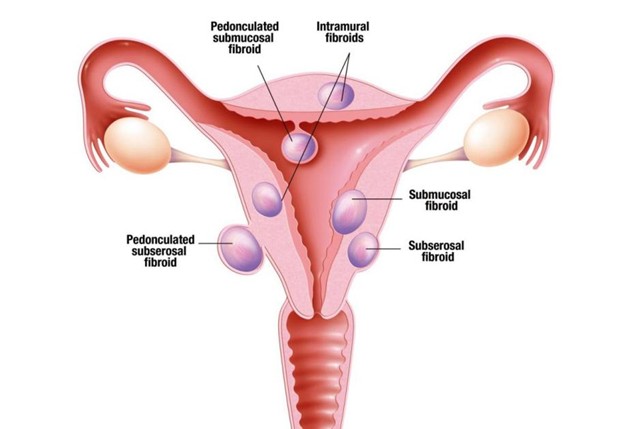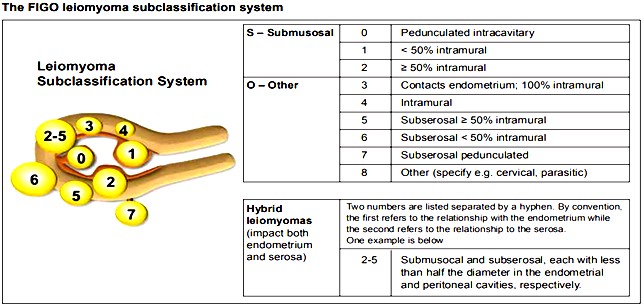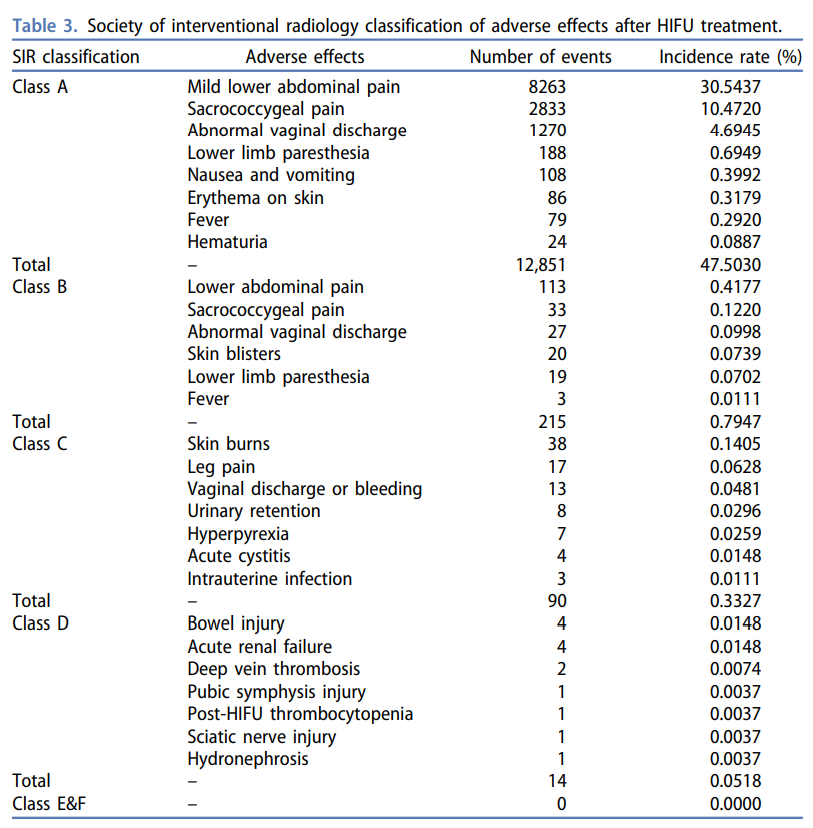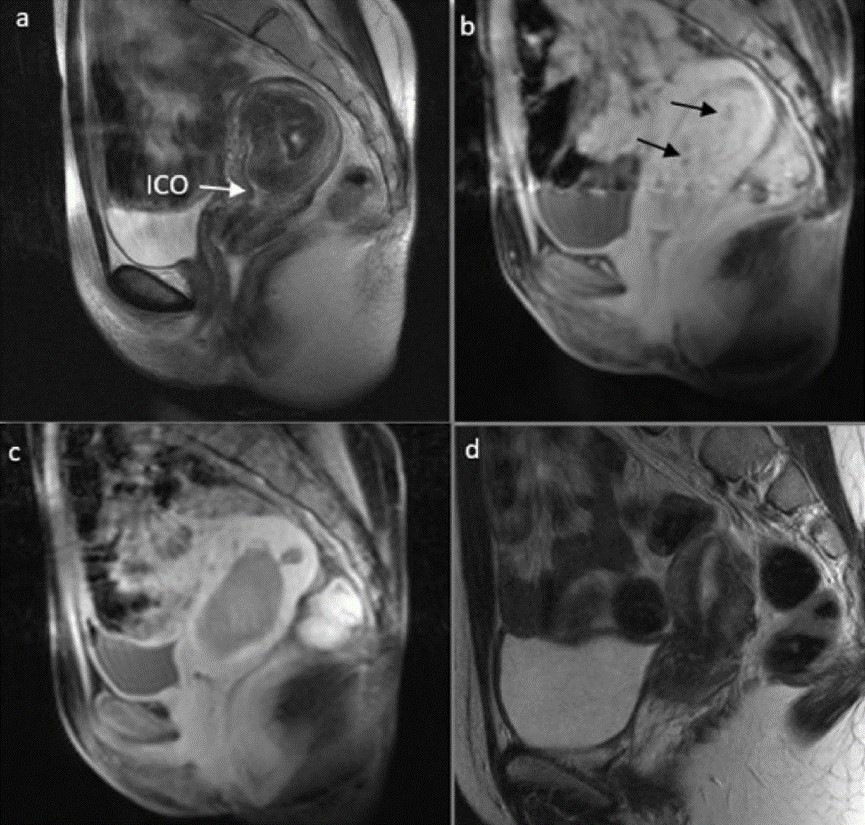About

Fibroids are non-cancerous growths that develop in or around the womb (uterus). The growths are made up of muscle and fibrous tissue, and vary in size. They're sometimes known as uterine myomas or leiomyomas. Many women are unaware they have fibroids because they do not have any symptoms.
Women who do have symptoms (around 1 in 3) may experience:
◾ heavy periods or painful periods
◾ tummy (abdominal) pain
◾ lower back pain
◾ a frequent need to urinate
◾constipation
◾ pain or discomfort during sex
In rare cases, further complications caused by fibroids can affect pregnancy or cause infertility.
Current Treatment Methods
Conventional therapy comprises hysterectomy, myomectomy, or hormonal manipulation. Hysterectomy has a 10% risk of significant complications, and while myomectomy preserves the uterus, it has recognised risks of local recurrence, growth of new fibroids, or failure of symptom relief. Since 1994, uterine artery embolisation (UAE) has become extensively used. It has a better safety profile than surgery, but potential complications include pelvic pain, nausea, vomiting, fever, and embolisation of other organs. High intensity focused ultrasound ablation (HIFU) is a noninvasive technique that causes instant coagulative necrosis (1–3 seconds) in a well circumscribed area a few mm in diameter, and can be performed under either magnetic resonance imaging (MRI) guidance or ultrasound guidance.
Evaluation of high-intensity focused ultrasound ablation for uterine fibroids: an IDEAL prospective exploration study.
Chen J, Li Y, Wang Z, McCulloch P, Hu L, Chen W, Liu G, Li J, Lang J; Committee of the Clinical Trial of HIFU versus Surgical Treatment for Fibroids.
What are the benefits of HIFU?
◾ It is non invasive, which means faster recovery comparing to surgery
◾ Only sedation, no anesthesia required
◾ When shrinkage of uterine fibroids occurs the uterus will be smaller and will be more amenable for pregnancy
◾ Studies have shown that success rates in reducing menorrhagia and dysmenorrhoea is up to 85%
◾ Patient can start trying to conceive about 3-4 months after treatment
◾ Patients can even have a normal delivery after the treatment because there is no scar in the uterus
Am I suitable to undergo HIFU?
Suitable Indications:
◾ Fibroid can be displayed by the integrated B-mode ultrasound scanner
◾ Fibroids is bigger than 25px in diameter
◾ A safe ultrasound acoustic pathway can be established
◾ Symptomatic patients who cannot tolerate surgical procedure
◾ Patients who have desire for pregnancy
✥70-80% of fibroids that require surgical interventions can benefit from HIFU

Type 2, 3, 4, 5, 6 are indications for HIFU
*Please be noted the above criteria is only for reference, whether a patient can be applied HIFU shall be further confirmed by HIFU doctors after diagnosis.
Contraindications:
◾ Patients with severe underlying diseases
◾ Patients with collagenosis and a history of radiotherapy on lower abdomen
◾ Patients with acute infection
◾ Patients with non-benign cervical, ovarian and gynecological diseases
◾ Uterine sarcoma
◾ Foreign objects in the acoustic pathway
◾ Patients who cannot lie in prone position for at least 1 hour
Effectiveness of HIFU
Symptom relief:
Many studies from both China, Korea and Europe have found that the fibroids volume reduction will reach about 60% 3 months after HIFU and the related symptoms will be alleviated and quality of life will be improved. A 20-center study conducted in China comparing HIFU with myomectomy and hysterectomy have found that the short-term outcomes for HIFU appeared better than those for surgery. Quality-of-life measures appeared to be equal to or better than those for surgery 1 year after the procedure.
Below are the findings from a single center study from Korea for reference:
The uterine fibroid volume reduction rates (%) were 58.08%, 66.18%, and 77.59% at 3, 6, and 12 months after treatment, respectively. The SSS(e Symptom Severity Score) reduction rates (%) were 55.58%, 52.76%, and 50.39% by 3, 6, and 12 months, respectively. The UFS–QOL(uterine fibroids symptom and quality of life) score increasing rates (%) were 42.66%, 43.50%, and 43.45% by 3, 6, and 12 months, respectively.
Pregnancy outcome:
Studies have found that patients undergoing USgHIFU treatment of uterine fibroids can achieve full-term pregnancies with few intrapartum or postpartum complications.
Immune function:
Study has shown that Short-term post-operative immune function is better preserved after HIFU treatment. Better preserved immune function may reflect a reduction in tissue trauma after HIFU treatment and contribute to reduced post-operative complications.
Sexual function:
Sexual function improved on average to some degree after HIFU (both HIFU and conventional myomectomy)
1. Evaluation of high-intensity focused ultrasound ablation for uterine fibroids: an IDEAL prospective exploration study. Chen J, Li Y, Wang Z, McCulloch P, Hu L, Chen W, Liu G, Li J, Lang J; Committee of the Clinical Trial of HIFU versus Surgical Treatment for Fibroids.
2. Ultrasound-guided high-intensity focused ultrasound treatment for uterine fibroid & adenomyosis: A single center experience from the Republic of Korea. Lee JS, Hong GY, Park BJ, Kim TE. Ultrason Sonochem. 2015 Nov;27:682-7. doi: 10.1016/j.ultsonch.2015.05.033.
3. Pregnancy outcomes after ultrasound-guided high-intensity focused ultrasound (USgHIFU) for conservative treatment of uterine fibroids: experience of a single institution. Rodríguez J, Isern J, Pons N, Carmona A, Vallejo E, Cassadó J, De Marcos JA, Paraira M, Giménez N, Pessarrodona A. Int J Hyperthermia. 2021 Sep;38(2):9-17. doi: 10.1080/02656736.2021.1908633.
4. The effect of high-intensity focused ultrasound treatment on immune function in patients with uterine fibroids. Wang X, Qin J, Chen J, Wang L, Chen W, Tang L. Int J Hyperthermia. 2013 May;29(3):225-33. doi: 10.3109/02656736.2013.775672.
5. Effect of high-intensity focused ultrasound on sexual function in the treatment of uterine fibroids: comparison to conventional myomectomy. Wang X, Qin J, Wang L, Chen J, Chen W, Tang L. Arch Gynecol Obstet. 2013 Oct;288(4):851-8. doi: 10.1007/s00404-013-2775-2.
Safety of HIFU
The most common adverse events(Class A) of HIFU treatment for gyenecological diseases are vaginal discharge, skin burn and etc. Serious adverse events (Class C&D) are less than 1%.
A multi-center study in China: 2011 to 2017, 27,053 patients with benign uterine diseases were treated with HIFU in 19 centers in China. Among them, 17,402 patients had uterine fibroids, 8434 had adenomyosis, 876 had caesarean scar pregnancies, and 341 had placenta accreta. After HIFU treatment, 13,170 adverse events were observed. Based on society of interventional radiology classification system, these adverse events were classified as Class A (47.5030%), Class B (0.7947%), Class C (0.3327%), and Class D (0.0518%). The rate of major adverse effects (Class C&D) was 0.3844%. Major adverse effects include skin burn, leg pain, vaginal discharge or bleeding, urinary retention, acute cystitis, intrauterine infection, bowel injury, acute renal failure, deep vein thrombosis, pubic symphysis injury, post-HIFU thrombocytopenia, sciatic nerve injury, and hydronephrosis. In 2011, the annual rate of major adverse effects was 0.9565%; the incidence decreased to 0.2852% in 2017. it concluded that “based on the results with low rate of major adverse effects from multiple centers, we concluded that HIFU is safe in treating patients with benign uterine diseases. With development of this technique and more experience on the part of the physicians, the rates of the major adverse effects will be further lowered”.

Adverse effect analysis of high-intensity focused ultrasound in the treatment of benign uterine diseases. Liu Y, Zhang WW, He M, Gong C, Xie B, Wen X, Li D, Zhang L.
Int J Hyperthermia. 2018;35(1):56-61. doi: 10.1080/02656736.2018.1473894. Epub 2018 May 24.
Case Study

Magnetic resonance images before and after USgHIFU in a 33-year-old nulliparous woman with hypointense submucosal myoma and hypermenorrhea.
(a) T2-weighted image before USgHIFU. Myoma volume of 51 cm3 and 6 cm maximum diameter occupying the whole uterine cavity.
(b) T1-weighted contrastenhanced image before USgHIFU. Myoma was highly vascularized with small areas of low vascularization (arrows).
(c) T1-weighted contrast-enhanced image immediately after USgHIFU showed a non-perfused volume of 100%.
(d) T2-weighted image 6 months after treatment. The myoma had completely disappeared with restoration of normal uterine anatomy. This patient achieved two full-term spontaneous pregnancies that ended in uncomplicated vaginal deliveries at 38.4 and 37 weeks. ICO, internal cervical os